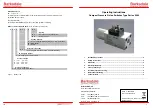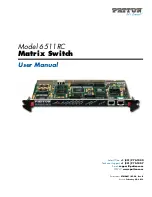
3)
After DR and BDR are determined, the master and slave one will be elected between the
DR/BDR and the other routers on the network, and then the link state database
synchronization will start.
4)
On the network the routers and DR/BDR will mutually unicast the link state data to
advertise LSA, until all the routers establish an identical link state database. During the
synchronization of link state database, if the database description packet sent contains an
updated LSA or a LSA the receiver doesn’t have, the receiver would send request for the
details of this LSA via LSR packets. In other words, in any phase of DD exchange, as long
as the received DD packet contains new LSA information, the receiver could send LSA
request for synchronization. The routers receiving the LSR packet will unicast the LSU
packet carrying LSA to the other end.
5)
After two routers have finished the synchronization of link state database, a complete
adjacency relation will be established.
6)
When the intra-area routers have an identical link state database, each of them will
calculate a loop-free topology through SPF algorithm with itself as the root thus to
describe the shortest forward path to every network node it knows, and create a routing
table according to the topology of shortest forward path and provide a basis for data
forwarding.
7)
After the establishment of routing table, if the network remains stable, the neighbors would
discover and maintain their neighbor relationships by sending out Hello packets at regular
intervals. And the adjacent routers would recalculate the routing table by periodical LSA
update in order to maintain valid entries in the routing table.
8)
Any new routers joining the network will accept the current DR/BDR and synchronize the
link state database with them until a complete adjacency relation is established. During
synchronizing the link state database, DR/BDR will obtain LSA from the newly-joint routers
and then flood this LSA to the adjacent routers who then will flood it to the other ports till
the entire network.
1.
Work Flow Diagram
The diagram below takes two routers for example to introduce in the Ethernet module the
detailed steps of two routers from failure state to complete adjacency state and the relevant
packet types involved in the process.
Note:
To facilitate the description the diagram below shows the LSA synchronization after the DD
exchange, while in reality these two processes are simultaneous.
205
















































